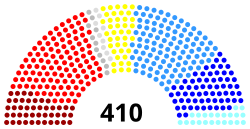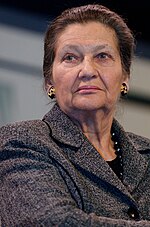
The European Parliament (EP) is one of the legislative bodies of the European Union and one of its seven institutions. Together with the Council of the European Union, it adopts European legislation, following a proposal by the European Commission. The Parliament is composed of 705 members (MEPs), due to rise to 720 after the June 2024 European elections. It represents the second-largest democratic electorate in the world, with an electorate of 375 million eligible voters in 2009.

The president of the European Commission is the head of the European Commission, the executive branch of the European Union (EU). The president of the Commission leads a cabinet of Commissioners, referred to as the College. The president is empowered to allocate portfolios among, reshuffle, or dismiss Commissioners as necessary. The College directs the commission's civil service, sets the policy agenda and determines the legislative proposals it produces. The commission is the only body that can propose or draft bills to become EU laws.
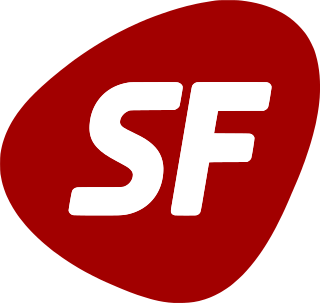
The Green Left is a democratic socialist political party in Denmark.

The 2004 European Parliament election was held between 10 and 13 June 2004 in the 25 member states of the European Union, using varying election days according to local custom. The European Parliamental parties could not be voted for, but elected national parties aggregated in European Parliamental parties after the elections.

Sir Graham Robert Watson is a British Liberal Democrat politician who served as a Member of the European Parliament (MEP) for South West England from 1994 to 2014. Watson was the chairman of the Parliament's committee on citizens rights, justice and home affairs (1999–2002). He then served for seven and a half years as leader of the Liberal Group in the European Parliament, first as leader of the European Liberal Democrat and Reform Party Group (2002–2004) and then as leader of the new Alliance of Liberals and Democrats for Europe Group (2004–2009). From 2011 until 2015, he was the president of the Alliance of Liberals and Democrats for Europe Party. From 2015 to 2020, he was a UK Member on the European Economic and Social Committee. He is currently an adjunct Professor at the University of Toronto's Munk School of Global Affairs and Public Policy.

The president of the European Parliament presides over the debates and activities of the European Parliament. They also represent the Parliament within the European Union (EU) and internationally. The president's signature is required for laws initiated under co-decision and the EU budget.

Elections to the European Parliament take place every five years by universal adult suffrage; with more than 400 million people eligible to vote, they are the second largest democratic elections in the world after India's.

The political groups of the European Parliament are the officially recognised parliamentary groups consisting of legislators of aligned ideologies in the European Parliament.

Giovanni Saverio Furio Pittella is an Italian politician who served as Leader of the Progressive Alliance of Socialists and Democrats Group from 2014 to 2018 and Member of the European Parliament (MEP) from Italy from 1999 to 2018. He previously served as First Vice-President of the European Parliament from 2009 to 2014.

The 2009 European Parliament election was held in the 27 member states of the European Union (EU) between 4 and 7 June 2009. A total of 736 Members of the European Parliament (MEPs) were elected to represent some 500 million Europeans, making these the biggest trans-national elections in history. An additional 18 observers were pre-elected.

The 1984 European Parliament election was the first since the inaugural election of 1979 and the 1981 enlargement of the European Community to include Greece. It was also the last before the accession of Spain and Portugal in 1986.
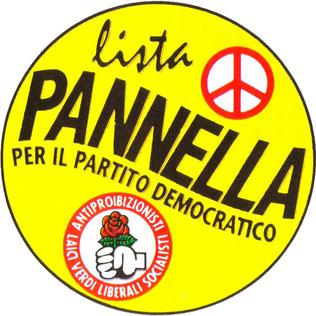
The Pannella List is a liberal and libertarian association, which was also the electoral list of the Italian Radicals between 1992 and 1999, when it was replaced by the Bonino List.

The Bonino List was a liberal and libertarian electoral list active in Italy from 1999 to 2004. Named after Emma Bonino, a leading Radical who had been European Commissioner in 1995–1999, after the unsuccessful "Emma for President" campaign, the list was the successor of the Pannella List, active from 1992 to 1999.

Between 1973 and 1993 the European Communities saw the first enlargement of the Communities. On 1 January 1973, Denmark, Ireland, and the United Kingdom became the first countries to join the Communities. The détente allowed initiation of the reunification of the continent through establishing the Conference on Security and Co-operation in Europe. Greece was the next to join EC on 1 January 1981, followed by Spain and Portugal joining on 1 January 1986, while Turkey has initiated the procedure in 1987. Upon the fall of the Iron Curtain, the CSCE was transformed in 1990 into Organization for Security and Co-operation in Europe, the Communities enlarged for a fourth time through the German reunification, while other former communist European countries stated their firm commitment to join, prompting formulation of the Copenhagen criteria. This period was, however, also the one which witnessed the first voluntary exit from the Communities, namely the one of Greenland in 1985. The integration progressed under the Delors Commission resulting in the creation of the European Union in 1993.
The European Democratic Alliance was a heterogeneous political group in the European Parliament between 1984 and 1995. It consisted mainly of deputies from the French Gaullist Rally for the Republic (RPR) and the Irish Fianna Fáil. The grouping had a generally centre-right outlook, and strongly defended the European Union's Common Agricultural Policy.
The Technical Group of Independents was a heterogenous political technical group in the European Parliament operating between 1979 and 1984.
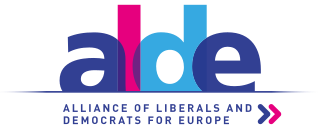
The Group of the Alliance of Liberals and Democrats for Europe was the liberal–centrist political group of the European Parliament from 2004 until 2019. It was made up of MEPs from two European political parties, the Alliance of Liberals and Democrats for Europe Party and the European Democratic Party, which collectively form the Alliance of Liberals and Democrats for Europe.

The Progressive Alliance of Socialists and Democrats (S&D) is the political group in the European Parliament of the Party of European Socialists (PES). The Progressive Alliance of Socialists and Democrats was officially founded as a Socialist Group on 29 June 1953, which makes it the second oldest political group in the European Parliament after Renew Europe (Renew). It adopted its present-day name on 23 June 2009. Centre-left in orientation, the group mostly comprises social-democratic parties and is affiliated with the Progressive Alliance and Socialist International.
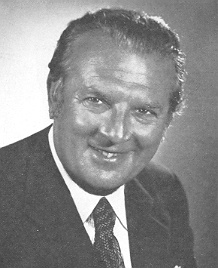
Mario Zagari was an Italian socialist politician, who served in the Italian Parliament and in the European parliament as well as in the Italian governments in various capacities.
More Europe is a liberal and pro-European political party in Italy, part of the centre-left coalition and member of the Alliance of Liberals and Democrats for Europe Party.











